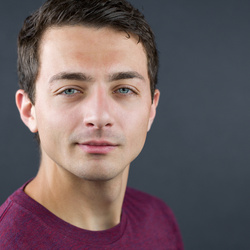Floods swallowing cities, buildings set ablaze, and entire landscapes torn apart by quakes aren’t just about spectacle. Here's how these famous effects were made.
Coming to you from Film Riot, this entertaining video starts with “The Rains Came” from 1939, where filmmakers stitched together miniatures, matte paintings, rear projection, and stunt work to create a flood triggered by an earthquake. Shooting the sequence at night hid seams, while traveling mattes allowed water to break through over the actors instead of sliding behind them. The flood itself was staged on a Fox sound stage with a 50,000 gallon tank, covered by 14 cameras. Half of the production’s 100 shooting days were spent on this sequence, which later won the Oscar for Best Special Effects. You see here how every trick of the time was combined to make something that still reads with weight.
The video moves on to “Green Dolphin Street,” a 1947 film that built earthquake destruction on shaker floors and spring mounted cliff miniatures. Rear projection was paired with live action stunts, creating the sense of ground splitting beneath the actors. Dry Gibson powder stood in for dust and debris, while foreground and background miniatures at different scales built depth into the shot. The flood sequence is especially striking, using a cliff miniature 40 feet high with real water splashing in front of rear projection. Even knowing the trick, it still plays convincingly.
Disaster films of the 1970s escalated the scale. “The Towering Inferno” leaned on a miniature building set ablaze while real fire, explosions, and torrents of water hammered through the sets. Custom dump tanks released 800 gallons at a time, leaving stunt performers visibly knocked around by the force. “Earthquake” built 1/6 scale Los Angeles landmarks, which were destroyed with piano wire, explosives, and falling debris. Full scale facades were also rigged and brought down with stunt performers in place. To push the experience further, theaters installed “Sensurround,” massive subwoofers that shook the room as audiences watched.
“Backdraft” shows the risk of chasing digital solutions too early. Howard’s team tried CG fire, found it unconvincing, and instead tested fuel mixes until they got the dirty, rolling flames they wanted. A 100 gallon rig named “Big Bertha” created walls of fire, while slow motion and inverted sets made flames crawl across ceilings. Actors like Russell and Glenn even performed stunts while suspended above live flames, with Glenn actually ignited for a shot. The realism comes not from polish but from raw fire behavior that couldn’t be faked.
“Stargate” pivots to science fiction, but its portal effect comes from water, not digital work. A 22 foot gate was built on set, while a clear round tank about three feet across was used to shoot the surface effect. Air blasts caused the water to snap inward and outward, and in slow motion with a gentle stir, it created the steady whirl. These water plates were then composited over the gate with a laser grid marking the exact plane, ensuring the effect sat perfectly.
The 1990s brought competing volcano films. “Volcano” blended miniature lava—made from thick dyed goop glowing under ultraviolet light—with CG lava that borrowed its texture from the physical passes. Six tables on gimbals let the lava flow in varied ways for different shots. “Dante’s Peak” went even bigger, coating sets in ash made from shredded newspaper and cellulose insulation, blasted across the town with industrial machines. For the dam break, a 680,000 gallon tank was built and dumped in a single take, sending tinted, debris-filled water crashing through the miniature. With only seven usable angles captured, the sheer scale sells the scene. Check out the video above for the full rundown.






